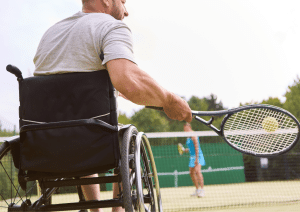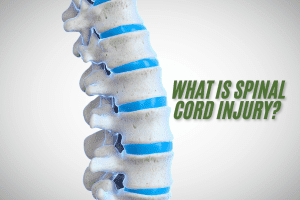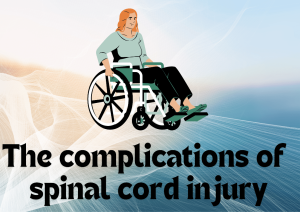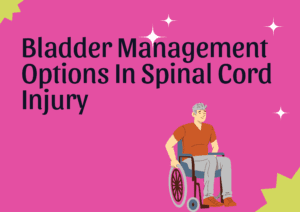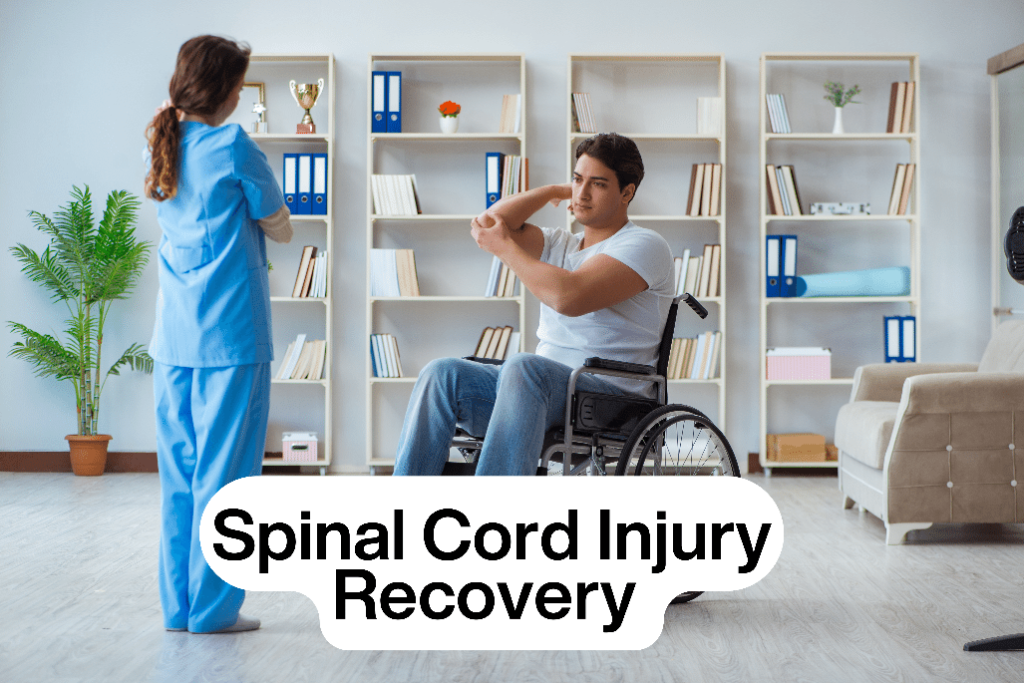
By Scihealthhub – November 1, 2024
This article outlines essential tips to support and improve your spinal cord injury (SCI) recovery process, helping to maximize your quality of life.
Spinal cord injury is a life-disrupting health condition with costly consequences for physical, emotional, and social aspects of life.
Available records show that between 250,000 and 500,000 people are diagnosed with spinal cord injury every year worldwide.(1).
Spinal cord injury recovery is an ongoing process that varies significantly based on the level and severity of the injury, the individual’s health, and available resources.
While there is no definitive cure for spinal cord injury, the following tips can enhance your recovery process and improve your quality of life.
1. Get Early Professional Help
Early professional intervention is crucial from the moment a spinal cord injury is suspected. Immediate and appropriate action minimizes the risk of further damage to the spinal cord.
- Transportation: Proper transport to the hospital is essential. Ensure the individual’s spine remains as stable as possible to prevent additional trauma. Keep the neck and back as straight as possible using a rigid neck collar and a carrying board. If a neck collar isn’t available, use towels or clothing to stabilize the head and neck.
- Acute Hospital Care: Upon arrival, medical professionals assess the situation and decide on the best course of action. This may include resuscitative measures or surgery to stabilize the spine, and remove bone fragments or foreign objects that could worsen the injury. Early intervention can significantly improve recovery outcomes by reducing inflammation, preventing secondary damage, and laying the groundwork for effective rehabilitation.
2. Start Rehabilitation Early and Stay Consistent
Research shows that the sooner rehabilitation starts, the more likely it is to enhance neuroplasticity, improve function, and reduce complications, leading to better long-term outcomes (2).
Neuroplasticity is the nervous system’s ability to adapt by forming new neural connections, which helps regain lost functions after a spinal cord injury.
Early Rehabilitation typically starts once the patient’s condition stabilizes, often within the first few days or weeks after injury. Consult a therapist to choose exercises best suited to your injury’s severity and recovery phase.
General Guide:
- Acute Phase (0-1 week post-injury): Focus on medical stabilization. Therapists may introduce gentle rehabilitation, such as respiratory support, repositioning, and gentle mobilization to prevent complications like pressure sores or muscle contractures.
- Early Rehabilitation Phase (1-3 weeks post-injury): Once stable, a more structured rehabilitation plan may begin, including passive range-of-motion exercises, pain management, and light physical therapy to prevent muscle wasting and maintain joint flexibility.
- Subacute Phase (3-8 weeks post-injury): Rehabilitation intensity increases, focusing on building strength, endurance, and mobility. Patients may work on functional tasks like transfers, self-care skills, and wheelchair mobility, depending on their injury level.
3. Manage Secondary Health Complications
Secondary health complications can hinder recovery if not well-managed.
- Skin and Pressure Sore Management: Regular repositioning, skin checks, and pressure-relieving surfaces (mattresses or cushions) can reduce the risk of pressure sores, which are common among those with spinal cord injury.
- Bladder Care: A strict bladder management program, like clean intermittent catheterization or using a condom catheter, can reduce the risk of urinary tract infections, kidney infections, and bladder stones. Drinking enough water and avoiding caffeine also supports urinary health.
- Bowel Care: A bowel program with a regular schedule, dietary fiber, and appropriate medications can prevent complications like constipation or fecal incontinence.
- Muscle Spasms and Spasticity: Certain exercises, medications, and interventions like Botox injections can help manage muscle spasms and spasticity. Consult your healthcare provider if spasms or spasticity become challenging.
4. Set Realistic Goals and Track Your Progress
Setting realistic goals and tracking progress are essential for staying motivated and measuring improvement.
Approach:
- Define Small, Achievable Goals: Start with short-term goals that build toward larger recovery objectives. For instance, if your goal is to improve mobility, you might begin by gradually increasing the range of motion in specific joints through daily exercises.
- Prioritize Goals Based on Needs: Recovery can be complex, so setting goals based on personal needs is essential. Focus on goals like improving independence, managing complications, or increasing endurance.
- Document Progress: Use a journal or digital tracker to record milestones, challenges, and achievements, including exercise data, functional improvements, and even psychological goals.
- Adjust Goals as Needed: Recovery is often nonlinear. Tracking allows you to adjust goals, whether to set more challenging goals as you improve or recalibrate expectations during setbacks.
- Celebrate Achievements: Recognizing small victories—whether mastering a task or feeling more comfortable with a routine—builds motivation for continued effort.
5. Prioritize Mental Health
Spinal cord injury can take an emotional toll. Adjusting to physical changes and daily challenges can lead to stress, anxiety, or depression, which, if untreated, can slow recovery.
Support Measures:
- Counseling and Support Groups: Therapy, peer support, and community groups provide coping strategies and a sense of belonging.
- Mindfulness and Meditation: Techniques like meditation, mindfulness, and deep breathing help reduce stress, enhance resilience, and manage chronic pain.
- Seek Medical Help: If you experience suicidal thoughts or need additional support, consult a mental health professional.
6. Embrace Assistive Technologies
Embracing assistive technologies is crucial for improving outcomes in spinal cord injury recovery, as these tools can enhance independence, mobility, and quality of life.
Here are tips for effectively integrating assistive technologies into your daily life:
- Understand the Range of Options: Familiarize yourself with the wide spectrum of assistive technologies for spinal cord injury so you can choose what best fits your specific needs and lifestyle. Options range from mobility aids like powered wheelchairs and standing frames to electronic aids for daily living (EADLs) that enable hands-free control of lights, doors, and other devices.
- Improve Physical Function: Devices like robotic exoskeletons or functional electrical stimulation (FES) systems can aid in walking and muscle strengthening, which helps prevent muscle atrophy, improve circulation, and even support bone density.
- Boost Independence: Assistive devices such as specialized utensils, voice-activated home assistants, wheelchair-accessible vans, and adaptive driving controls make it easier to perform daily tasks independently.
- Enhance Communication and Social Interaction: Voice recognition software, eye-tracking devices, and adapted keyboards allow people with limited hand function to use computers, smartphones, and other technology, supporting communication, work, and hobbies.
- Seek Professional Guidance: Consult occupational therapists or assistive technology specialists to determine the best devices for your recovery goals and daily routines. They can assess your needs and recommend personalized solutions that improve comfort, safety, and usability.
7. Adopt a Healthy Lifestyle
Adopting a healthy lifestyle is essential for optimizing recovery after a spinal cord injury. It builds physical resilience, mental well-being, and overall quality of life, which are all crucial to the spinal cord injury recovery journey.
Here’s a closer look at key lifestyle adjustments to support recovery:
- Balanced Nutrition: Eating a variety of nutrient-rich foods, such as vegetables, fruits, lean proteins, whole grains, and healthy fats, supports tissue repair, immune function, bowel health, and overall energy levels.
- Weight Management: Spinal cord injury can increase the risk of both weight gain and muscle loss due to reduced mobility. A balanced diet, portion control, and physical activity can help maintain a healthy weight, reducing the risk of complications like pressure sores and diabetes.
- Adequate Hydration: Staying hydrated is essential to prevent complications like urinary tract infections (UTIs), constipation, and kidney stones, which are common in spinal cord injury. Proper hydration also supports skin health, which is crucial for preventing pressure sores. Aim to drink 3-4 liters of water daily.
- Quality Sleep: Restful sleep aids physical repair and mental well-being. Prioritizing good sleep hygiene, such as maintaining a consistent sleep schedule, creating a comfortable sleep environment, and managing stress, can improve mood, energy levels, and immunity.
- Avoid Smoking and Limit Alcohol Intake: Smoking can slow recovery and harm respiratory and cardiovascular health, while excessive alcohol can interfere with medications and increase the risk of falls and other injuries.
8. Stay Informed
Staying informed is a powerful tool in the recovery process after a spinal cord injury. Knowledge empowers individuals to make informed choices, manage their health effectively, adapt to new developments, and advocate for themselves in healthcare settings.
Consider the following ways to stay informed:
- Learn About Spinal Cord Injuries and Potential Complications: Familiarizing yourself with the nature of spinal cord injury and common secondary complications can help you prevent issues, recognize symptoms early, and manage the condition more effectively.
- Stay Updated on Treatments and Innovations: Spinal cord injury research is constantly evolving, with advancements in therapies like stem cell research, neurorehabilitation, and exoskeletons. Staying informed on these innovations may provide new options for improving function, mobility, or pain management.
- Learn Effective Self-Care Techniques: Spinal cord injury often requires meticulous self-care routines, such as skin checks, bladder and bowel management, and pressure relief techniques. Knowledge of these practices helps prevent complications and empowers individuals to take control of their health.
- Understand Your Healthcare Rights: Knowing your healthcare rights ensures access to necessary services, treatments, and adaptive equipment. This knowledge assists in communicating effectively with healthcare providers and advocating for quality care.
9. Embrace a Support System
Recovery from a spinal cord injury can be a complex and emotional journey, and a strong support network is invaluable.
Surrounding yourself with family, friends, and a network of supportive individuals provides not only emotional comfort but also practical help. Loved ones can assist with daily activities, accompany you to appointments, and offer encouragement during difficult moments, helping to reduce feelings of isolation.
Additionally, connecting with support groups—whether in-person or online—can be incredibly empowering. These communities offer a safe space to share experiences, exchange advice, and learn coping strategies from others who have gone through similar challenges. One such support group is the Spinal Cord Injury HealthHub Forum.
10. Seek Financial Support
Given the substantial costs involved in managing a spinal cord injury, seeking financial support is essential for effective recovery and long-term health (3).
Consider these opportunities for managing costs:
- Insurance Support: Many health insurance plans offer varying levels of assistance for hospital visits, rehabilitation, medical equipment, and ongoing care. Review policy options thoroughly to ensure optimal benefits and identify any supplemental insurance that may cover unmet needs.
- Government Programs and Grants: Some governments offer disability-specific funding or grants aimed at covering medical expenses, accessibility needs, and support services. Checking with local and national government agencies can reveal programs that are often underutilized or have annual funding available.
- Non-Governmental Organizations (NGOs): Many NGOs provide grants, subsidies, or discounted services focused on supporting individuals with disabilities, covering rehabilitation, assistive technology, and caregiver support. Connecting with these organizations can help alleviate financial burdens and expand access to quality resources.
In conclusion, optimizing spinal cord injury recovery requires a holistic approach that addresses physical, emotional, and social needs. By following these essential tips, staying committed to rehabilitation, and working closely with healthcare professionals, you can enhance your recovery journey and improve your quality of life. Remember, progress may be gradual, but every small step counts.

